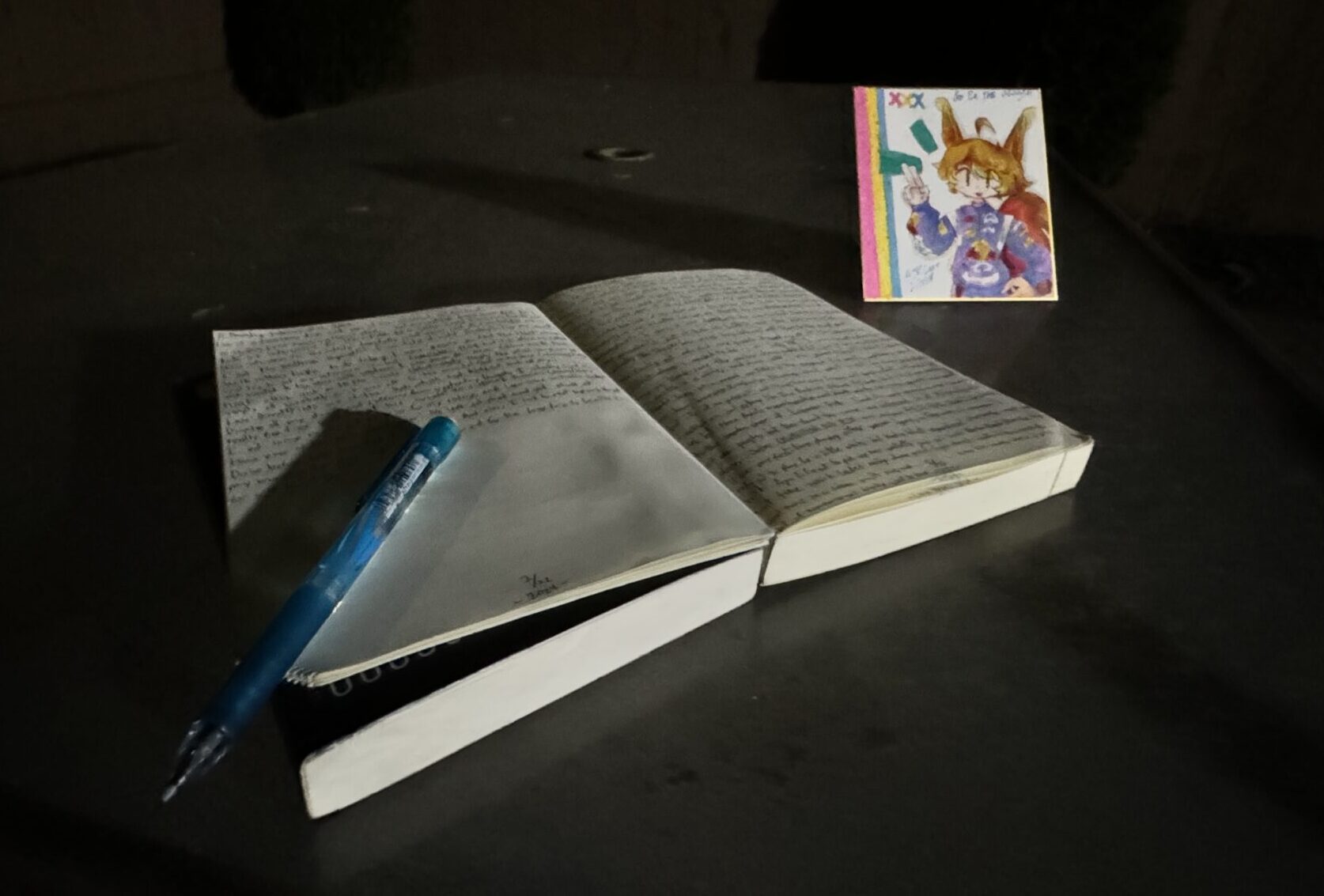Journaling stands as one of the best and most actionable mental health activities. The prospect is simple – get a pen and paper, then write anything that comes to mind. Though instead of events, wellness journaling focuses more on writing thoughts and emotions.
The practice is heavily favored amongst mental health practitioners and members of Highline’s counseling center. Studies on the subject see the benefits of journaling as “…both a more coherent and illuminating approach to investigate mindfulness.”
As simple as it sounds, starting can be intimidating for those trying to journal. There’s no telling how long an entry will be, if there’s enough to write, and it usually involves recalling uncomfortable feelings. However, most of these feelings vanish once the first word is written.
After this, one is free to write in their journal about anything. The beauty of journaling is that it’s a private and safe space of expression. The only one likely to read it back is the writer (so long as it’s kept in a safe spot), who no longer has to worry about presentation or grammar being judged.
Once the writer is done reflecting, the benefits are almost immediately clear. Another study on journaling and its many styles show mental benefits including personal growth, intuition, and problem solving amongst others. Getting feelings out of the head and onto a paper is likely what makes them easier to confront.
The benefits derived from journaling lie in the writing and its execution. Different situations call for different writing styles, whether it’s creative or urgent. The Thunderword met with director of counseling, Larisa Wendfeldt, to discuss the dilemma of writing to vent or for expression.
“I think there are different types of journaling,” explained Wendfeldt when asked about styles of the practice. “There’s moments where I would see it as art, and moments I would just consider me getting things out.” This view is consistent with countless sources describing their own relationship with the practice as both an art form and a wellness tool.
How can journaling be art? This has been a point of contention amongst philosophers and artists alike. The Stanford Encyclopedia of Philosophy acknowledges this with its definitions, faults within, and skepticism about defining art.
The most common belief is that art is subjective. Such is evident in the 2019 piece “Comedian” by Maurizio Cattelan – a banana duct taped to the wall. The banana is not the focus, but the concept Cattelan is trying to prove. As such, the controversy elicited by the art – whether it’s against the classification or the simplicity of it – prove Cattelan’s point that anything can be art.
Of course, writing itself is already considered a form of art – whether we find it in books, poetry, or articles like this. People usually envision writing as an art only in the former three areas though, neglecting to include journaling. For this reason, personal writing is often seen as nothing more than, well, personal writing.
One way or another, the core of journaling is self-expression, even if simply describing day-to-day events; it’s the style that makes each entry unique. Where there’s expression, you’ll find art.
“I think my form of journaling takes on what voice I want to express,” Wendfeldt elaborated. “It gives me the opportunity to see how I want to be in the world.” This is a common theme in art as well, often shaped based on one’s view of their environment and community.
The therapeutic benefits of journaling still come into play, no matter the reason you write. Without its practice as a wellness tool, the self-expression behind the art likely wouldn’t exist. It could even be argued that both aspects are inseparable – one cannot exist without the other.
The distinction of wellness journaling comes back to mind. Wendfeldt suggests two aspects of this is to focus on mental health – the content and the process. The former describes events and keeps an archive, while the latter focuses on emotions surrounding those events.
“Content is about what actually happened, and process is the more important part asking ‘what are the dynamics,’” Wendfeldt said. Similar to the art and therapy of journaling, content and process are inseparable aspects too. To save time and stress though, the latter sees the most focus.
That’s not to say writing for content is a bad thing, but it’s a tall order for those seeking to mitigate stress. “Some people do journaling to document times in their life. For mental health, I think it’s more important to write about the process,” Wendfeldt continues. Moving past the need for content and context can give birth to more art in journaling that still benefits the writer.
“You can write about the content, but to really explore your experience, you can write about the process and get out what you feel,” Wendfeldt explains further. “Content can be important to remind you what happened, but the most important part is: What did you feel?”
For those hesitant to start journaling, it’s never too early or too late to start on any day. The simplicity of journaling means any notebook, journal, or phone app can be used to start an entry and continue a habit. Joined with the endless possibilities of journaling, anyone can jump in and see how it works for themselves.

